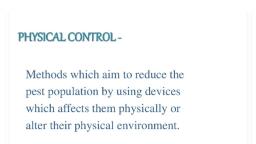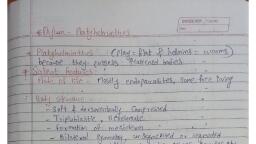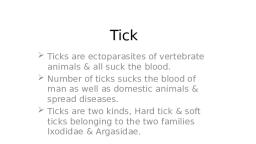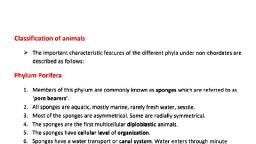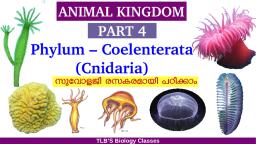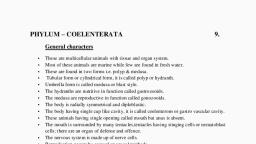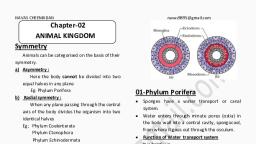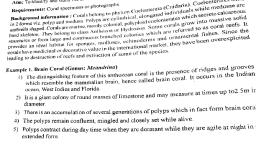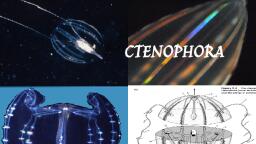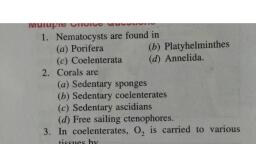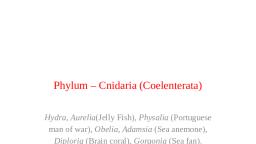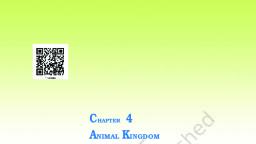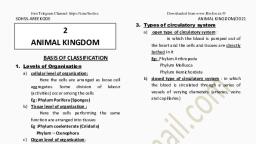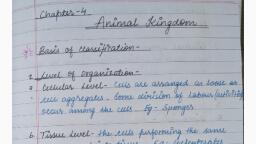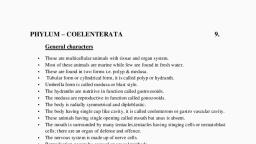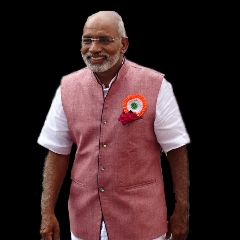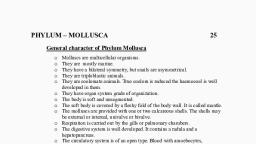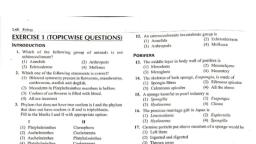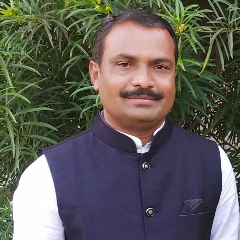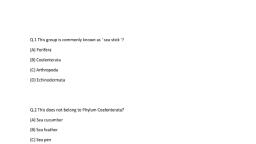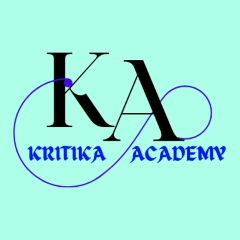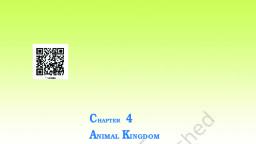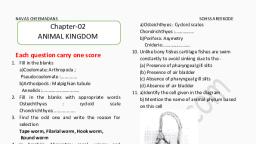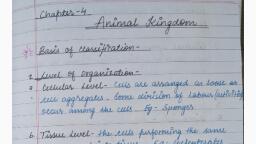Page 2 :
Characters of Coelenterata or Cnidaria, •, •, •, •, •, •, •, , They shows two forms ,Polyps and Medusa, The polyps leads to easy sedentary life, It has cylindrical body with thin body wall, The free oral end bears central mouth, Hydra and anemones are best example of polyps, Some coelenterates shows only medusa, They shows polymorphism
Page 4 :
•, •, •, •, •, •, , Some shows life cycle with alteration of generation, Polyps shows sedentary life with cylindrical body, The medusa is free swimming forms, The medusa is umbrella or bell shaped, The tentacles are armed located at lower side, The tentacles are functions as obtaining food and defence.
Page 5 :
Concept of radial symmetry, • Symmetry-It is method of arrangement of the constituent parts of animal, body called as Symmetry, • The animal shows three types of symmetry, • Asymmetry, radial symmetry, bilateral symmetry
Page 6 :
Radial symmetry, •, •, •, •, •, •, , The organism is divided into similar halves (mirror images), Primary radial symmetry is shown by phylum coelenterata, The animal body is cylindrical, globular ,spherical, Phylum Echinodermata is pentaradial symmetry, Eg. starfish and sea urchin, This system is characterised by many sedentary life.
Page 8 :
Alternation of generation, •, •, •, •, •, •, , Polymorphism is Phenomenon of division of labour, i.e. different functions are played by different individuals, It is associated with life history of organisms, It may represents polyps-egg-polyps, The life cycle is represented by medusa-egg-planula-polyps, The alternation of generations of metagenesis observed in life cycle.
Page 9 :
General characters :•, •, •, •, •, •, •, , The animals are aquatic, They may be solitary,colonial or free swimming, They are radially symmetrical, They are diploblastic, Coelom is absent, The tentacles surrounds the mouth, On the body of tentacles nematocysts are presents
Page 10 :
•, •, •, •, •, •, •, , They have different structural types like polyps and medusa, Respiratory, circulatory & excretory systems are wants, Sensory organs are simple, Reproduction by both sexual and asexual type, Development is indirect, The larva is called as planula larva, Life cycle shows phenomena of alteration of generation
Page 12 :
Classification, •, •, •, •, •, •, •, •, •, , 1.class-Hydrozoa, Most of animals are marine & colonial, They shows alteration of generation, Body shows radial symmetry, Body wall is diploblastic, Medusa is small with muscular velum, Nematocyst present on ectoderm, The embryo is planula., Eg.hydra
Page 13 :
•, •, •, •, •, •, •, •, •, , 2.Class-Scyphozoa, Animals are marine, Polyps phase is absent, Medusa is umbrella shaped, Velum is reduced, Tentacles are hollow, Gastrovascular cavity is without stomodaeum, They are commonly called as jelly fishes, Eg:- Jelly fish
Page 14 :
•, •, •, •, •, •, •, •, •, , 3.class-Anthozoa, Animals are solitary or colonial, Only polyps form is present, The symmetry is biradial, Oral ends shows flat oral disc, Gastrovascular cavity is divided into septa, Fertilization is external, Nervous system is simple, Eg.tubipora , Sea anemone
Page 15 :
Polymorphism in hydrozoa, • It is occurrence tighter of many types of zooids, • They do different functions in life cycles of single species, • In class hydrozoan polymorphic colony consists of more than one type of, individuals, • They are called as zooids or persons, • The polyps is fixed leads to sedentary life, • It has cylindrical body with thin wall, • The proximal end of polyps is closed
Page 16 :
Polymorphism, •, •, •, •, •, •, , The medusa is free swimming ,umbrella shaped with tentacles, The muscular system of medusa is highly evoled, The nervous system is diffuse, The division of labour is occurs, The highest degree of polymorphism is occurs in siphonophore, The members are delicate, transparent, beautiful
Page 17 :
Polymorphism- modification of polypoids, •, •, •, •, •, •, •, •, •, , A.GastrozoidsIt is called as siphon, The polyps is tubular, The gastrologist are long, single, B.Dactylozooids-They are defence organs, They are tubular without mouth with tentacles, The tentacles bearing gonopalpons, C. Gonozooids-Are reproductive in function, The tentacles are absent
Page 19 :
Polymorphic modification of medusoid, • A.pneumatophores-most of siphonophores posses at one end, og colony, • Its function is float & helps in swimming, • It is situated at apex of colony, • Different forms shows great variations, • B.Hydrophyllia-It is medusoid form, • They are leaf like thick, • They are varying in shape
Page 20 :
•, •, •, •, •, •, , C. Nematocalyces-They are bell shaped with velum,radial canal, They are called as swimming bells, D. gonophores-They occur singly or in clusters, They deaerate mudusae without mouth, There are two types of gonopores, Eg. testis and ovaries, , • E. Phyllozooid- Leaf like zooid ,with nematocysts serving protection.
Page 21 :
Origin of polymorphism, • A. poly organ-it is proposed by Huxley, • According to them polymorphic siphonophores are primitive types, • B. Polyperson theory-This theory is given by leuckert, This theory mantains that parts of siphonophores are either polyps or, medusae, Significance-It helps to performs division of labour
Page 22 :
Economic Importance Of Cnidaria:1. Food:- Jelly fishes & sea anemones are eaten by man in the orient & Italy ., 2. Stingers:- Many times , the coelenterates , directly affecting man by stinging, nematocysts. These sting cell have ability to pierce the human skin., 3.Corals :- The coral rocks or its islands are useful as military bases & landing fields., The hard coral lime can be used for building purposes & decorative application in, architecture., 4.Decorations :- There are several beautiful corals which have been used as, ornaments or in decorative art from ancient times., 5. Experimental Biology :- Coelenterate animals are used to demonstrate certain, biological phenomenon , such as budding, regeneration, grafting, colony formation,, metagenesis, polymorphism & types of behaviour.
Page 23 :
Coral reef formation & its importance, Coral Reef :-, , Coral reefs are tropical, shallow-water, calcareous structure supporting a diverse, association of marine plants & animals., The coral colonies grow continuously in size by budding of polyps & form, extensive masses known as reefs., The actual coral animals or ‘polyps’ is soft bodied with tentacles. Corals secrete, an external CaCO3 skeleton. This hard skeleton forms the framework of coral, reefs., Defination :- It is a ridge or mound-like biogenic structure in tropical seas, coposed of CaCO3., Constituent:- Molluscs shell, sponges, sea anemones, flatworms, crabs, some, snails, octopus, sea urchin, sea cucumber, sharks, green turtle- animals., Helimedia of green algae, sea weeds, of red algae- plants.
Page 24 :
Conditions for formation : Temperature- warm water, temp. between 20 to 30 degree celcius., Depth of sea- Shallow water, depth is related to entry of sunlight, for photosynthesis., Sunlight-Due to symbiotic association with algae sunlight is, required., Clear water- sediments, sewage disposals increases turbidity of, water reducing light., Nutrient- Can survive in poor nutrient area because nutrients loke, planktons block surface.
Page 25 :
Significance of coral reefs, 1. Protect the coast from erosive actions of sea waves., 2. Provide a habitat for thousands of marine species & we the, place for feeding & reproduction., 3. Serve as a source of food & medicine & act as storage bank of, genetic resources., 4. Corals are used for decorating houses, aquaria & rock gardens., 5. Stones carved out from the coral reefs are used for, constructing buildings & roads.
